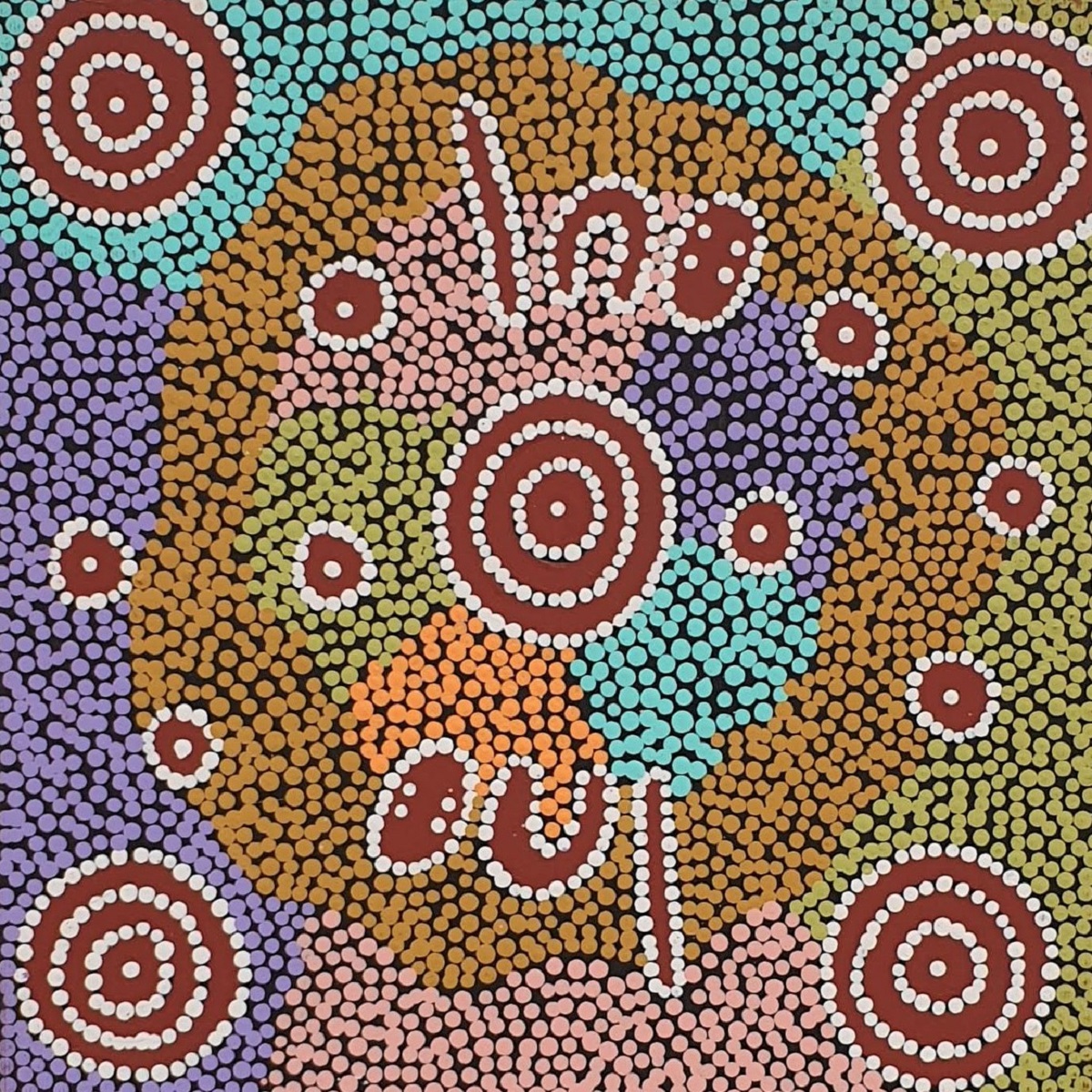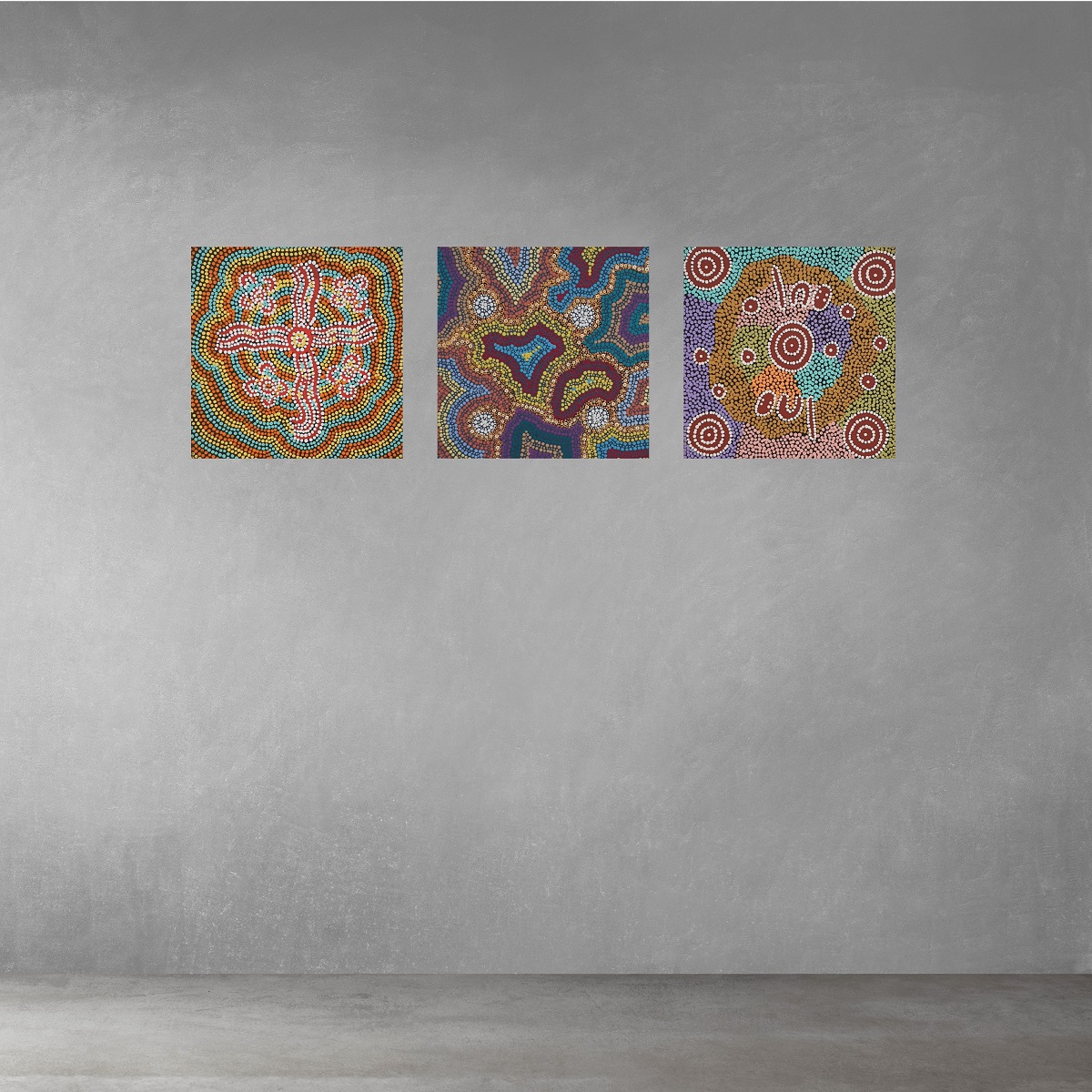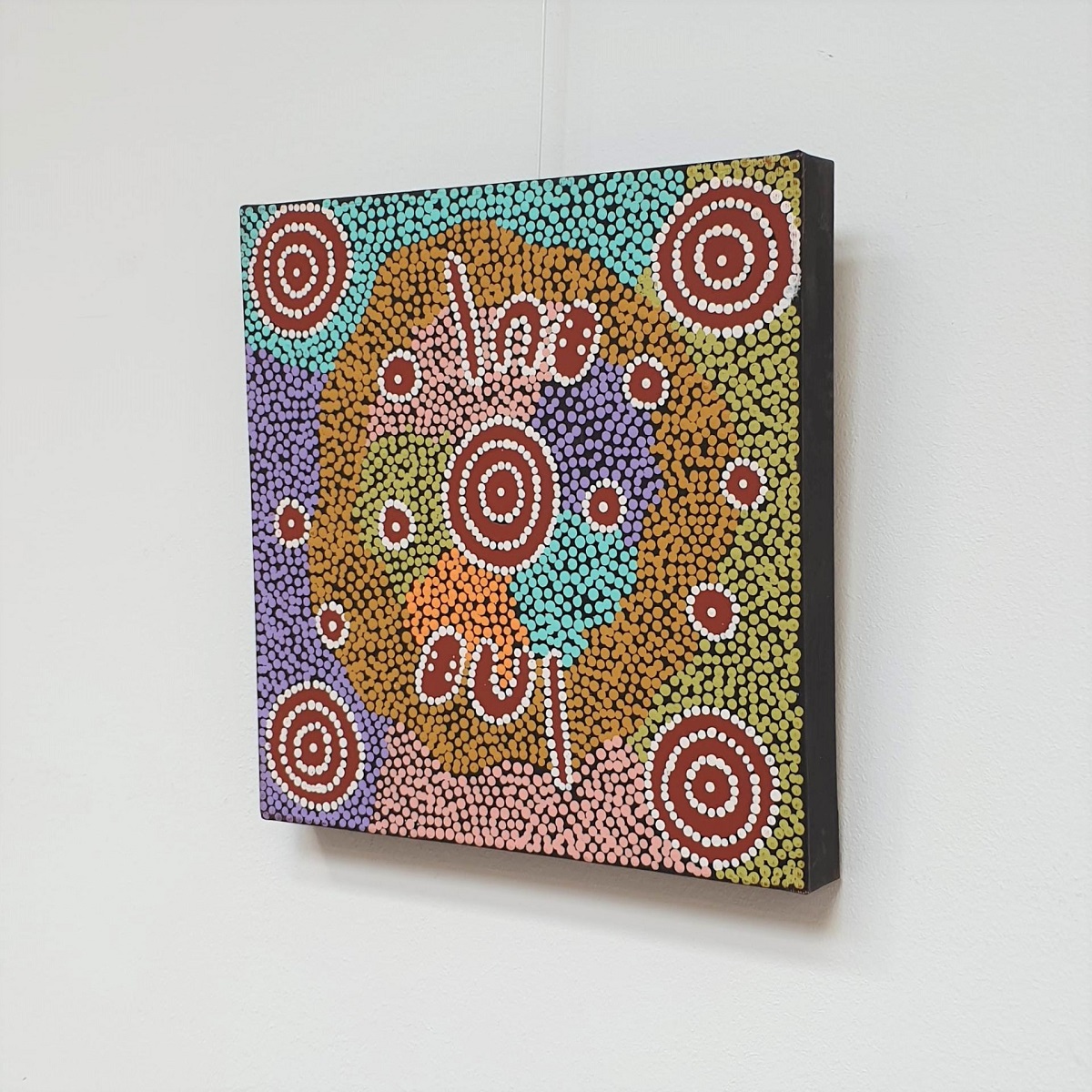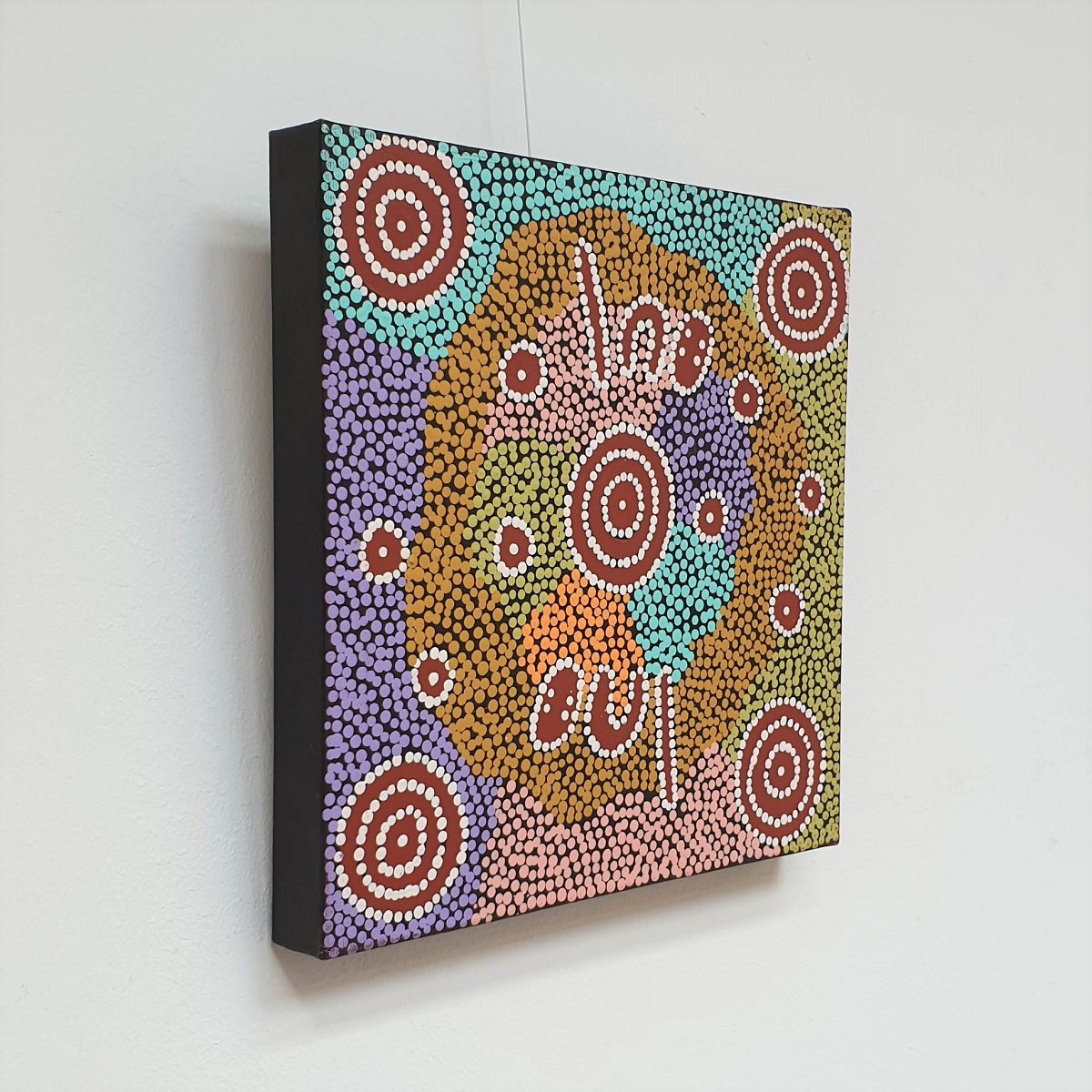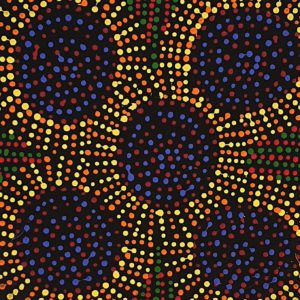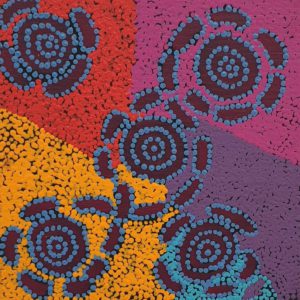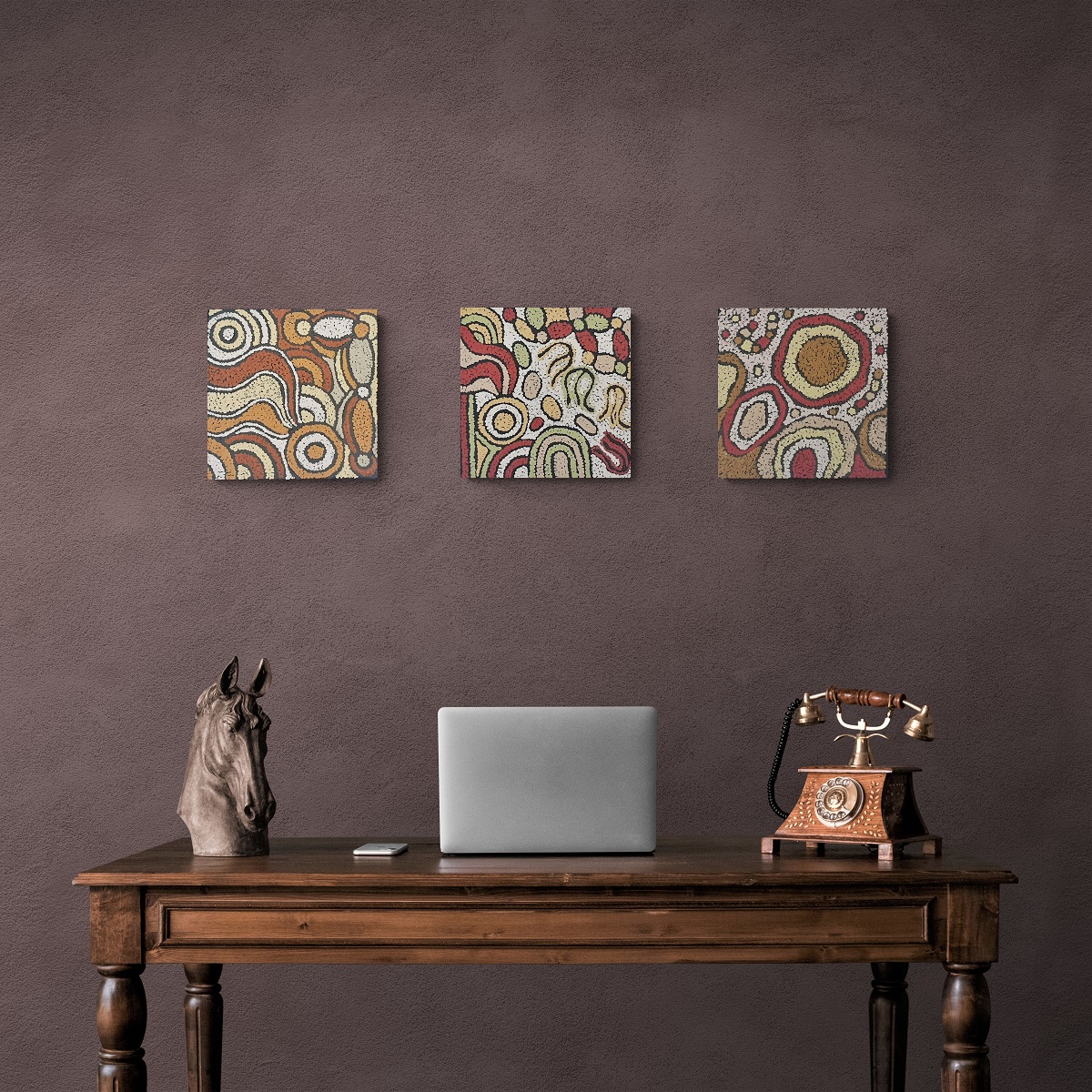Story (Justine Nakamarra Nelson)
This Yarla Jukurrpa belongs to men of the Japaljarri/Jungarrayi subsections and to Napaljarri/Nungarrayi women. It comes from an area to the east of Yuendumu called Cockatoo Creek. ‘Yarla’ (bush potato [Ipomea costata]) are fibrous tubers that grow beneath a low spreading plant, found by looking for cracks in the ground. This edible tuber grows from ‘yartura’ (roots) which seek out moisture to spout new plants. Yarla are good to eat, when cooked they are really soft and tasty. The Jukurrpa tells of ‘yarla’ and ‘wapirti’ (bush carrot [Vigna lanceolata]) ancestors fighting a big battle in this area.
